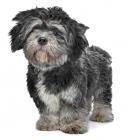Lhasa Apso
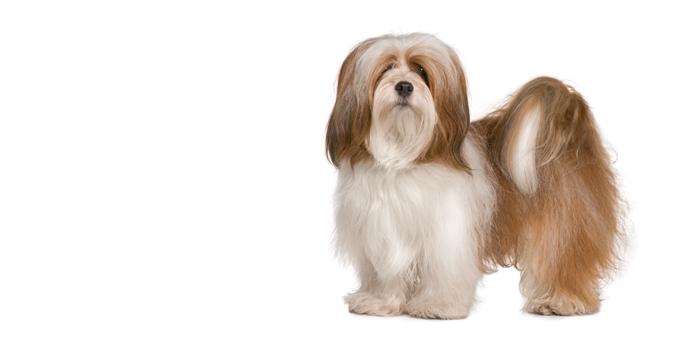
In my own words
How are you today? Do you need a cuddle? I can cheer you up in no time! I’ll do anything for my owner and I love a good cuddle. Do you love cuddles? I know I do! Do you think I’m cute? I love being the centre of attention. With my coat all nicely clipped, don’t I look good? All the other dogs are going to be so jealous of how smart I look!
Did you know my kind is one of the oldest dog breeds in the world? How about that! My kind have been watchdogs in Tibetan palaces for centuries! I’m a pretty good watchdog, even if I do say so myself. I’ll always let you know if there’s someone around. You’re safe with a dog like me!
My ideal owner(s)
Retirees
City dwellers
Couch potatoes
Families with older children
What they say about me
Lively
Outgoing
Bold
Friendly
Please read on, to find out more about me, and whether I will be someone you can be happy with for the next 14 years, or even longer!
Is this Lhasa Apso for you?
Test your knowledge about the Lhasa Apso
Information essential about the Lhasa Apso
Kennel Club Group:
Non-sporting
Size:
Small: Weight 13 – 15 lb (6 – 7 kg)
Height 9 – 11” (23 – 28 cm)
Popularity:
Breed History:
Lhasa Apso was used to guard Tibetan palaces and temples. This bold and alert canine’s duty was to guard the interior of the building, while its massive and imposing partner (the Tibetan Mastiff) was charged with guarding the outside. In the early 1930s, the Dalai Lama helped introduce the Lhasa Apso to America and other parts of the world.
The Lhasa Apso originated in Tibet, and were only bred by holy men and nobles. Thought to bring good luck, this breed was considered to be sacred. For this reason, the Lhasa were used as watchdogs in monasteries for over 2000 years. They are highly intelligent, with keen instinct and acute hearing. The Lhasa Apso is believed to be one of the world’s oldest dog breeds with recent DNA analysis identifying them as one of the 14 most ancient breeds. Some experts claim the breed dates back to 800 BC when it was developed from the Tibetan Terrier and the Tibetan Spaniel. For centuries the dog was bred exclusively in Tibet. Due to the remote nature of Tibet and how the dogs were revered by monks, the Lhasa Apso did not become well known until relatively recently.
Rarely were Lhasa Apsos permitted to leave their homeland, and the few that were given to honoured guests, mostly Chinese, were male. In this way, reproduction of the species remained in Tibetan control. This is primarily because the Buddhist way of life values all living things, with the belief that souls of deceased people could enter the bodies of this little dog. As such the trading of them was strictly prohibited. The first Lhaso Apso’s in Britain were gifts to a member of the Indian Medical Service, who in turn gave the dogs to the wife of a British official in the early 20th century. This gift to the west has resulted in a different bloodline from the original Tibetan strain and over the years thoughts have been put forwards as to how to preserve the originality of the breed by rejoining the two lines in some way.
Character:
The Lhasa Apso is hardy and vigorous and exude an air of dignity. They can be wary and suspicious of strangers but are considered to be one of the most affectionate breeds with their main function being that of a companion. They have a dual temperament, being highly expressive of their love and devotion but also having a mind of their own and wanting everything their own way. They are spirited, lively and happy and have an acute sense of hearing making them excellent watchdogs. They prefer to be the only pet in a household as they thrive on attention.
Temperament:
This hardy dog is friendly but assertive and is intelligent and lively. They make good pets and companions and are fond of a warm lap or bed to sleep in. They are very affectionate towards their family and quick to learn. They respond well to motivational training and are very obedient and have a good sense of hearing making them good watchdogs. They can be quite comical dogs and readily learn new tricks. This breed cannot bear to be left alone and does not tolerate changes to their daily routine. The Lhasa Apso has a desire to be with people and protect their owners and with appropriate socialisation can live with children and other animals. They have a kind nature but can be wary of strangers. This breed is noted for travelling well and can endure high altitudes being a mountain bred dog. Legend says that they are reputed to have a sixth sense which gives them the ability to sense avalanches before they occur.
Conformation:
The Lhasa Apso has a small sturdy frame covered in a long, dense coat. Its head has a square muzzle, black nose, moustache and beard, hanging ears and dark medium sized eyes. Its feathered tail curls over the back. This breed looks cheerful but determined.
Coat:
The Lhasa Apso has a double coat over the entire body. The cover serves as an insulation barrier that keeps them warm in winter and cool in summer. The coat grows to floor length, even covering the eyes. The texture of the coat is neither soft nor silky. The coat is naturally parted from head to tail down the centre of its back. Many non professional owners prefer to clip the hair back for ease of care.
Colour:
The coat can be any shade from black, gold, cream, white, liver and red. Occasionally the ears may be tipped with a darker colour
Training:
This breed is very strong willed so it is important to maintain authority when training. They do not respond well to harsh or heavy-handed training but respects a firm, positive leader. You have to earn this dog’s respect. The Lhasa Apso can display an arrogant and obstinate attitude and may be difficult to housetrain so the crate method is recommended. This breed requires intense early socialisation and training and respond well to praise and rewards. If they are not clearly shown who is the master, this little dog will take charge.
Care:
They are fairly easy to groom but need more attention when the hair is long. Daily brushing and occasional bathing will keep the coat looking good. If the coat is left long they are extremely high maintenance. They are prone to eye problems and ear infections to it is important to check and clean them regularly. This breed is an average shedder.
Health:
The lifespan of a healthy individual is up to 14 years, which is normal for a dog of this size. However, some live for as long as 18 years. If you buy from a reputable, responsible breeder, health problems should not occur. This breed is prone to suffering from eye problems such as Dry Eye (Keratoconjunctivitis Sicca) which is caused when the eyes don’t produce enough tears to stay moist. A vet can perform tests to determine if this is the cause which can be controlled by medication. They can also suffer from Cherry Eye, which is a prolapse of a gland in the eye. It is a common defect in some breeds where the gland of the third eyelid prolapses and becomes visible. It appears as a red mass in the inner corner of the eye and is sometimes mistaken for a cancerous tumour. The eye becomes chronically inflamed and there is often a discharge. Because the gland is responsible for about a third of the eye’s tear production, the eye can eventually suffer from dryness. This breed can also suffer from kidney disease, hip dysplasia, respiratory ailments and skin disorders.
Exercise:
Lhasa Apso needs daily exercise to maintain its upbeat attitude. Fresh air and walks will also keep it healthy. They benefit from free play outside in a protected open area. The Lhasa Apso is a well-behaved traveller. Inside the Lhasa Apso is playful and rambunctious which will largely meet their exercise needs.
You may also like:
Lhasa Apsos looking for a home in UK »
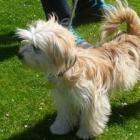
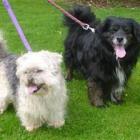
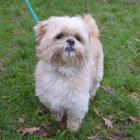
If you like Lhasa Apsos, you may be interested in breeds of the same size »
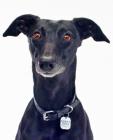

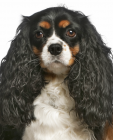
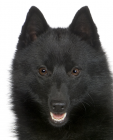
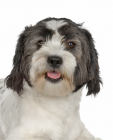
If you like Lhasa Apsos, you may like other breeds with similar characteristics »
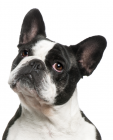
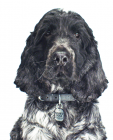
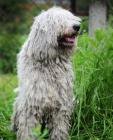

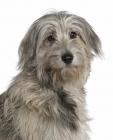
Advice on choosing your breed »
Find an animal shelter or rescue home where a Lhasa Apso is waiting for a new home »
The following grid gives a fast track review which covers all breeds. You can apply it to help you decide if a Lhasa Apso is suitable for you, the environment where you live, your personality and your lifestyle. On the grid, 1= strongly disagree, and 5= strongly agree. For example, if you are looking for a dog that suits apartment life, look down the list under Environment, and you will see that Lhasa Apsos are well suited to urban living, scoring 5. You might like to save or print off this section and keep it for reference while you check some other breeds before making your final choice
Be the first to rate this breed »
|
*PLEASE NOTE: All our breed profiles are general, and all dogs are individuals. Always talk to the breeders and meet the owners you are buying from. Try to meet the dog and its parents if it is a puppy in their home environment.









